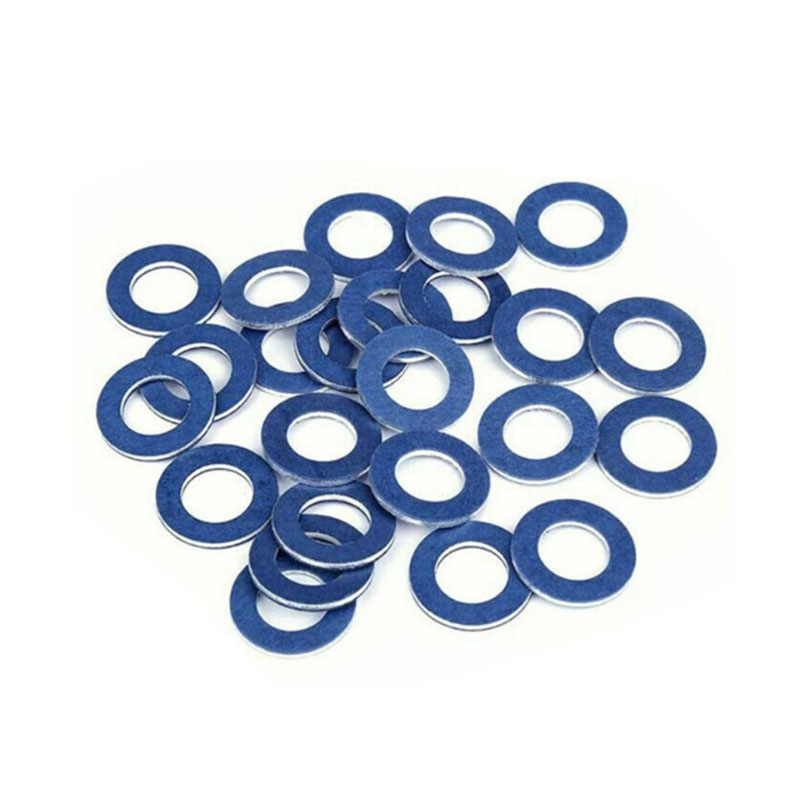shaft seal differential
Understanding Shaft Seal Differentials A Comprehensive Overview
Shaft seals play a crucial role in maintaining the efficiency and longevity of machinery across various industries. Among the myriad components in mechanical systems, those specifically designed for differential applications, known as differential shaft seals, have gained significant attention. This article will delve into the importance of differential shaft seals, their functionalities, types, maintenance, and the implications of their failure.
What is a Differential Shaft Seal?
A differential shaft seal is designed to prevent the leakage of fluids between rotating and stationary components of machinery. Typically found in vehicles' rear axle differentials, these seals keep lubricants contained, ensuring smooth operation and minimizing wear and tear on the gears. The differential allows for the inner wheels to rotate at different speeds, particularly useful when turning corners, and proper sealing is vital in ensuring optimal performance.
Importance of Differential Shaft Seals
1. Fluid Containment Differential shaft seals ensure that the lubricating oil remains housed within the differential unit. Without effective sealing, oil can leak, leading to insufficient lubrication, which in turn may cause overheating and failure of the gears.
2. Preventing Contaminants Entry These seals provide a barrier against dirt, dust, and other contaminants that could degrade the quality of the lubricant. The ingress of contaminants can lead to accelerated wear of the differential components, resulting in expensive repairs.
3. Reducing Friction A well-sealed differential allows the oil to do its job of reducing friction between moving components efficiently, improving overall fuel efficiency and reducing emissions.
4. Longer Equipment Life By maintaining the integrity of the lubricating fluid and preventing contaminants from entering, differential shaft seals contribute to the longevity of the entire drivetrain system.
Types of Differential Shaft Seals
There are several types of differential shaft seals, each with unique features suited for specific applications
1. Rubber Seals These are the most common type, offering good flexibility and resistance to oil degradation. They work effectively in most standard applications.
2. Lip Seals Lip seals have a lip that makes contact with the rotating shaft, providing a dynamic seal that can adjust to slight variations in the shaft's surface. They are commonly used in situations where minimal leakage is paramount.
3. Mechanical Seals These seals provide a high level of durability and leak prevention, often employed in high-pressure applications. They consist of two surfaces that provide a tight seal under various conditions.
shaft seal differential

4. Composite Seals Combining materials such as rubber and metal, composite seals offer enhanced durability and resistance to extreme temperatures and pressures.
Maintenance of Differential Shaft Seals
Routine maintenance of differential shaft seals is critical in ensuring their longevity and effectiveness. Here are some maintenance tips
1. Regular Inspections Periodically check for any signs of leakage or damage around the seal area. Early detection can prevent significant fluid loss and subsequent damage.
2. Fluid Changes Follow manufacturer recommendations for fluid changes in the differential. Old or contaminated lubricant can compromise the effectiveness of the seal.
3. Proper Installation Ensuring that seals are installed correctly can prevent premature failure. Misalignment and improper fitment can lead to leaks.
4. Environmental Protection Protect seals from harsh environmental conditions, such as extreme temperatures and exposure to chemicals, which can degrade the seal material over time.
Implications of Seal Failure
The failure of a differential shaft seal can lead to significant consequences, including
1. Fluid Leaks Loss of lubricating oil can lead to inadequate lubrication, causing overheating and damage to the differential components.
2. Contamination Entry of dirt and moisture can compromise the quality of the lubricant, leading to increased wear and potential complete failure of the differential.
3. Increased Costs Repairs or replacements resulting from seal failure can be costly and time-consuming, leading to downtime in operations and affecting overall productivity.
Conclusion
Differential shaft seals are vital components that play an essential role in the performance and reliability of mechanical systems, especially in vehicles. Understanding their functions, types, and maintenance can aid in prolonging their effectiveness and preventing costly repairs. Taking preventative measures to care for these seals is an investment in the machinery's overall health, ensuring smooth and efficient operations for years to come.
-
Understanding the Front Main Engine Seal: Purpose, Maintenance, and Installation
News Jul.29,2025
-
Understanding O-Rings and Seal Rings: Types, Applications, and Custom Solutions
News Jul.29,2025
-
Understanding Crankshaft Oil Seals: Rear Seals, Pulley Seals, and Their Role in Engine Integrity
News Jul.29,2025
-
The Importance of Front and Rear Crankshaft Seals in Engine Performance and Oil Management
News Jul.29,2025
-
Crank Oil Seals: Functions, Types, and Cost Considerations in Engine Maintenance
News Jul.29,2025
-
A Comprehensive Guide to O-Rings and Seals: Types, Materials, and Global Applications
News Jul.29,2025
-
Mastering Diesel and Performance Engine Maintenance: A Guide to Critical Oil Gaskets
News Jul.28,2025
Products categories















